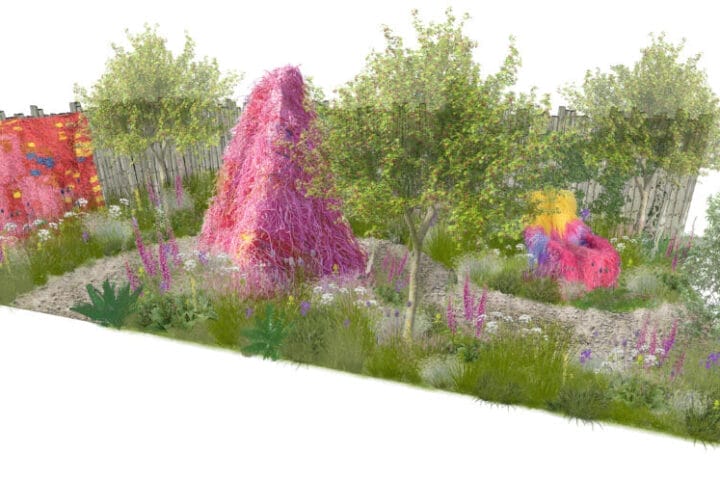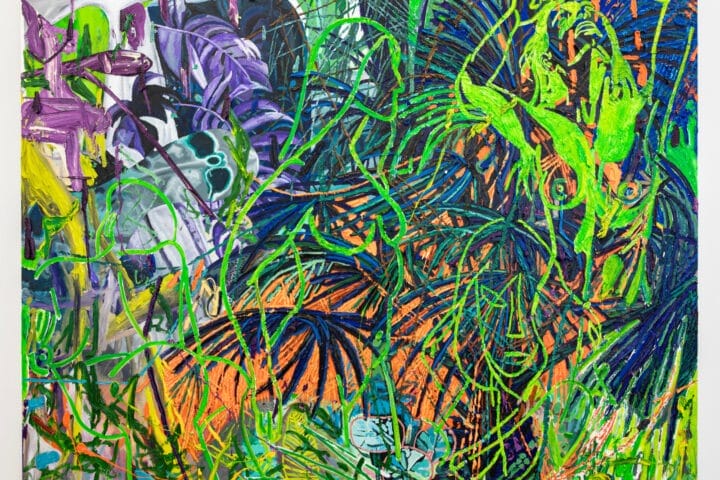Featuring twenty-five new paintings, this is your largest show to date. Do you have a favorite piece in the show or one that was particularly challenging to work on, and why?
Creating “Painter’s Tower” [seen below] was an incredibly interesting journey for me. The central figure in the painting is a recurring character named Painter, who first appeared in my work back in 2015. On one level, Painter provides a way for me to project myself into the mythology that I’m building. On another level, they represent something much larger than myself. This character allows me to reflect on creativity in more archetypal terms, which means that there isn’t always a one-to-one relationship between Painter’s creative process and my own.
There are three paintings depicted in “Painter’s Tower,” two of which are my own work from previous exhibitions. “The Dream” from 2017 is propped against a tree on the right, and “The Origin of the Specters (Part II)” from 2020 is draped over the table as a tablecloth. The implication here is that everything I create has a parallel existence within my mythology. The abstract painting on the easel, however, has no existence beyond “Painter’s Tower.” Creating this painting-within-a-painting forced me to adopt an artistic methodology that wasn’t my own, which was a fairly surreal experience. Most artists have hidden aspects of their process that aren’t readily apparent when looking at the finished product, and Painter is no different. So, in order to make this abstraction of a chess piece feel genuine, I built a shadow-box sculpture of torn and cut paper as a study. Of course, I recognize that this has now become part of my own process, but there’s a part of me that feels as if I arrived at this solution by going outside of myself.
What else can you tell us about your new series?
In this exhibition, my work veers into territory that could be considered Visionary art and a number of the paintings incorporate archetypes from the tarot.
What part of the artistic process do you enjoy?
In order to create a study for one of my paintings, I use sculptures, drawings, collages, and photographs to build an image. This might seem like a complicated way of making an oil painting, but there’s something fascinating that happens when an idea is filtered through so many different mediums. When I work this way, ideas tend to transform and grow in unexpected ways. It’s a strategy for moving beyond my preconceptions in order to enter a territory of genuine discovery.
Why do you live and work in Los Angeles, and not elsewhere?
Los Angeles is a city of storytellers. It’s a place that lives and breathes American mythology. I think this is why my work has been so well received here. People in L.A. seem to have an intuitive understanding of what I’m doing in my art. The creative community here is also incredibly diverse and vibrant. Since moving here in 2018, I’ve made connections with musicians, filmmakers, animators, fine artists, and writers. It’s important to me that my work contributes to a larger creative community, and I’ve found this community in Los Angeles.










